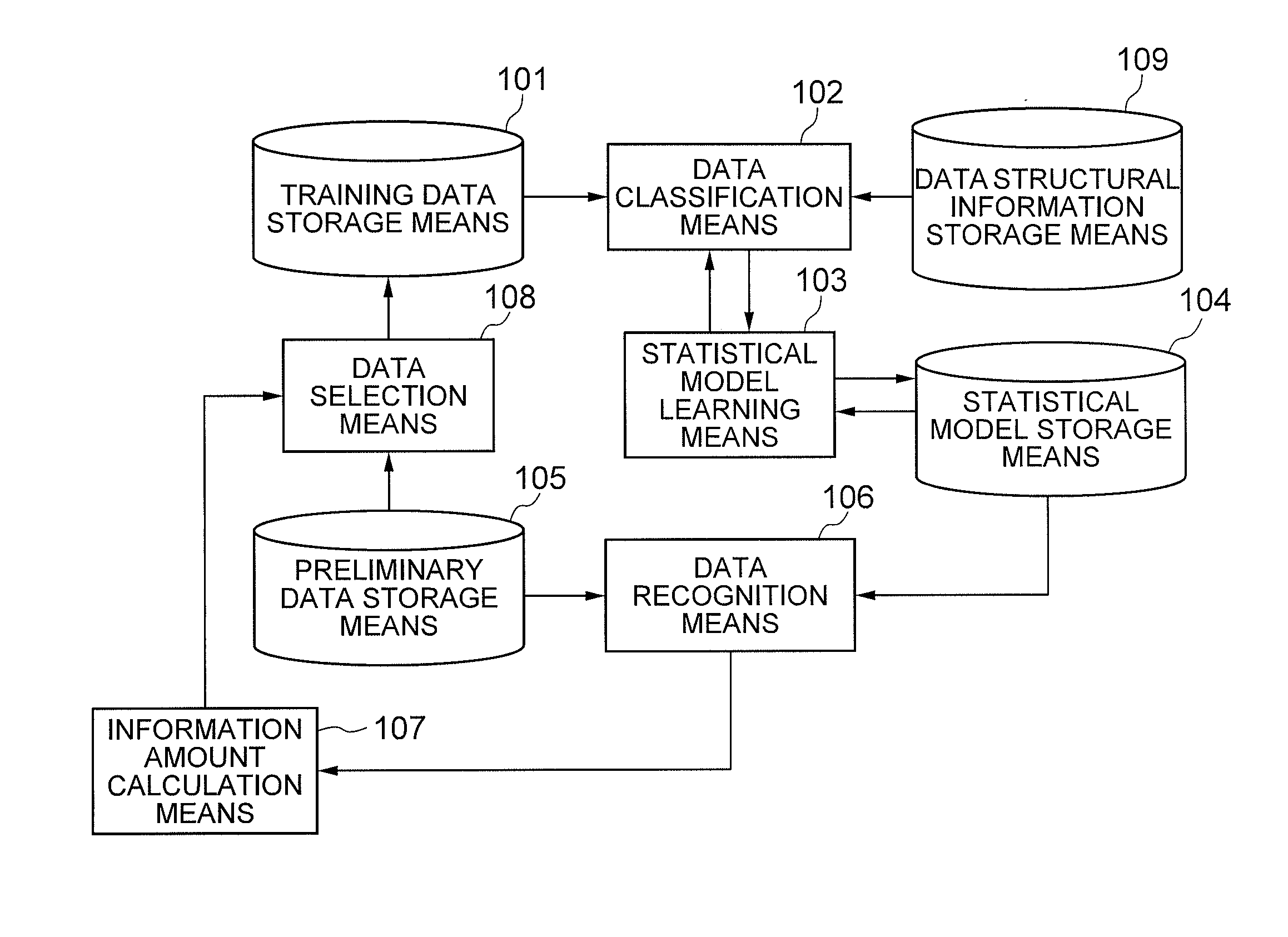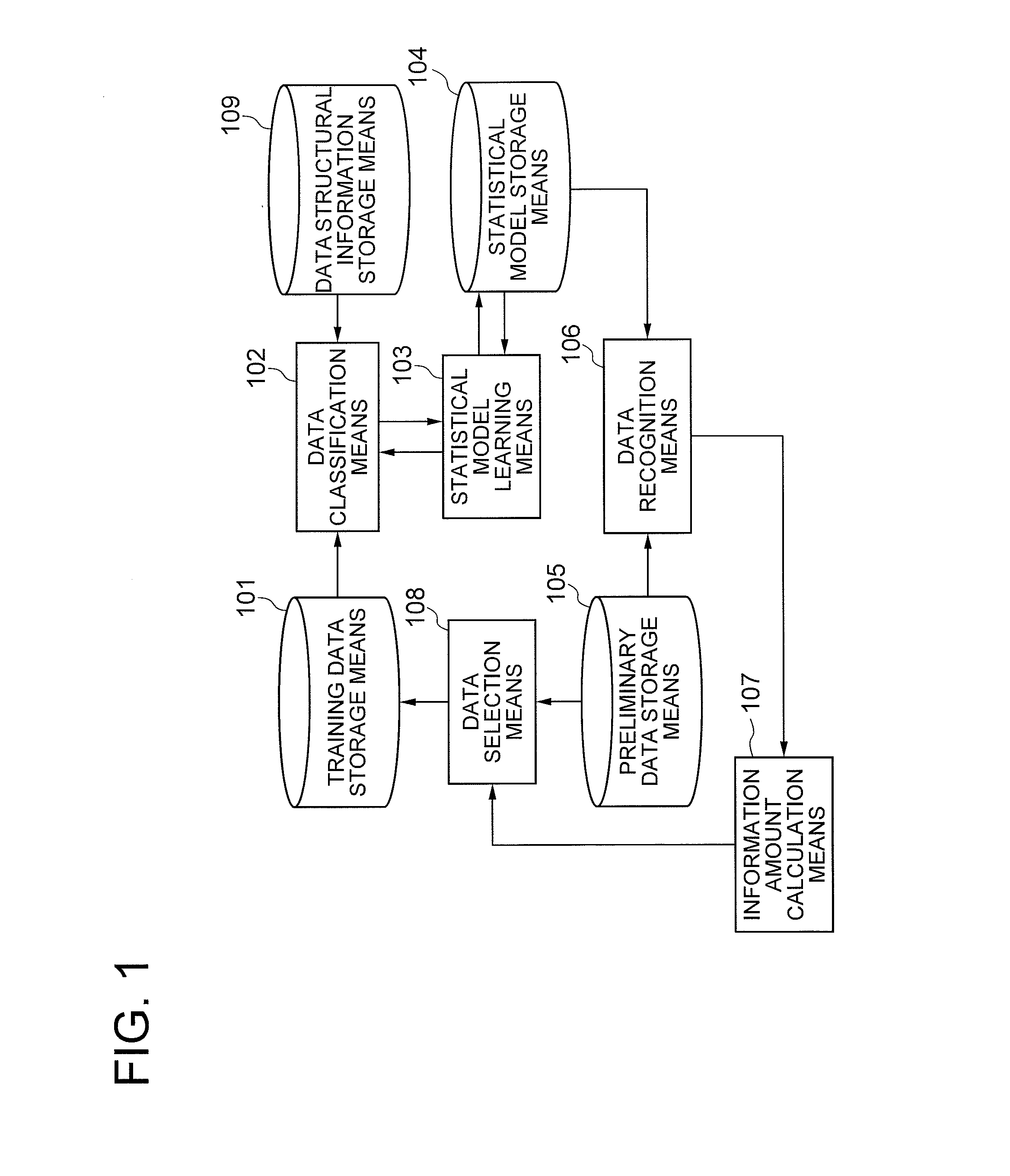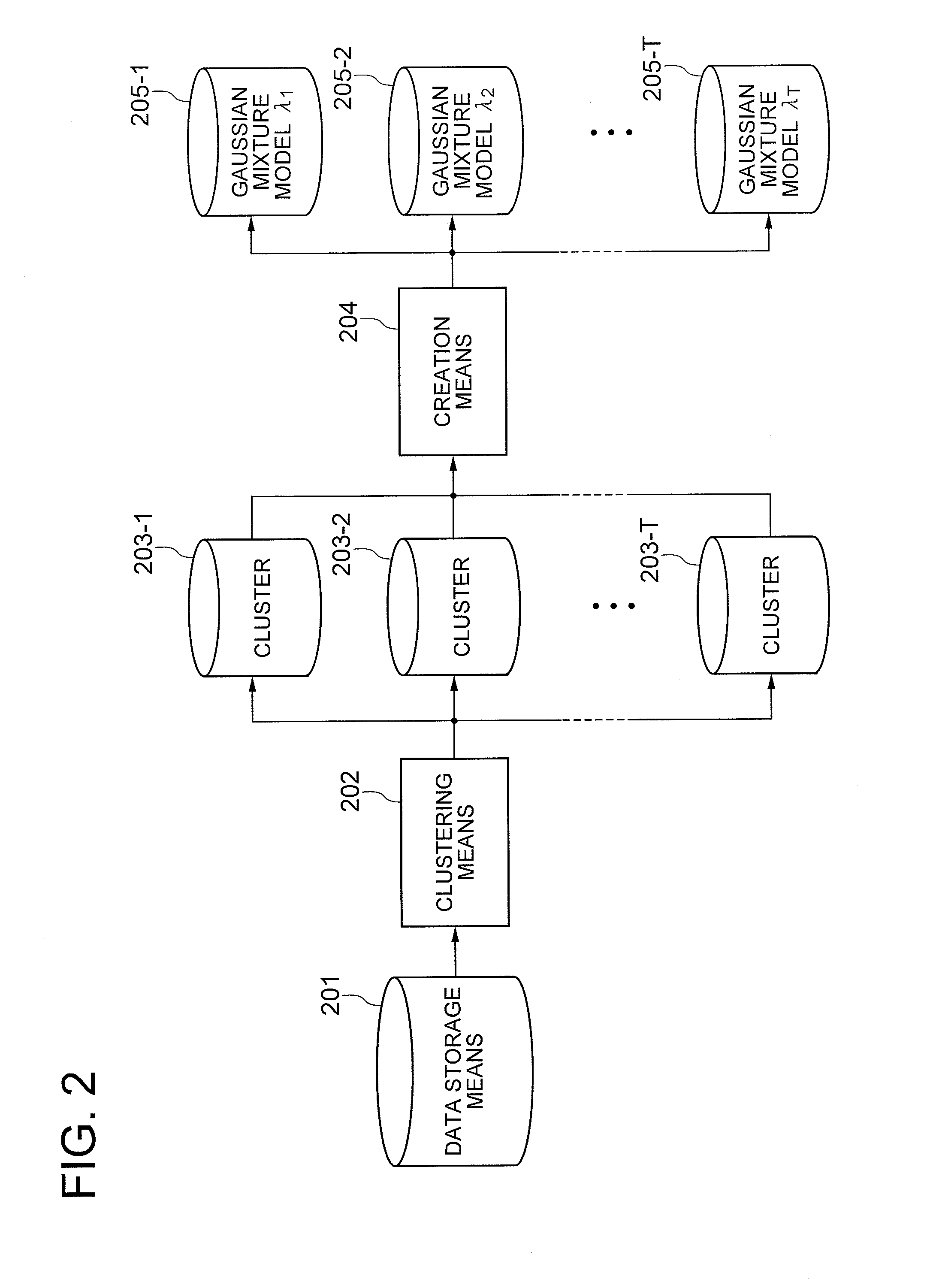Statistical model learning device, statistical model learning method, and program
a statistical model and learning device technology, applied in machine learning, speech analysis, speech recognition, etc., can solve the problems of large amount of labeled, and large cost of attaching labels, so as to improve the quality of statistical models and reduce costs , the effect of efficient selection of data
- Summary
- Abstract
- Description
- Claims
- Application Information
AI Technical Summary
Benefits of technology
Problems solved by technology
Method used
Image
Examples
first exemplary embodiment
A First Exemplary Embodiment
[0021]Referring to FIG. 1, a first exemplary embodiment of the present invention includes a training data storage means 101, a data classification means 102, a statistical model learning means 103, a statistical model storage means 104, a preliminary data storage means 105, a data recognition means 106, an information amount calculation means 107, a data selection means 108 and a data structural information storage means 109, and operates to impartially create T statistical models in a generally extremely high-dimensional statistical model space based on the information with respect to data structures stored in the data structural information storage means 109, and calculate the information amount possessed by each preliminary data based on the variety, that is, the degree of discrepancy of the recognition results acquired from the T statistical models. By adopting such a configuration, utilizing the T statistical models disposed in an area with a higher ...
second exemplary embodiment
A Second Exemplary Embodiment
[0055]Next, explanations will be made in detail with respect to a second exemplary embodiment of the present invention in reference to the accompanying drawings.
[0056]Referring to FIG. 4, the second exemplary embodiment of the present invention is configured with an input device 41, a display device 42, a data processing device 43, a statistical model learning program 44, and a storage device 45. Further, the storage device 45 has a training data storage means 451, a preliminary data storage means 452, a data structural information storage means 453, and a statistical model storage means 454.
[0057]The statistical model learning program 44 is read into the data processing device 43 to control the operation of the data processing device 43. The data processing device 43 carries out the following processes under the control of the statistical model learning program 44, that is, the same processes as those carried out by the data classification means 102, st...
third exemplary embodiment
A Third Exemplary Embodiment
[0062]Next, explanations will be made with respect to a third exemplary embodiment of the present invention in reference to FIG. 6, which is a functional block diagram showing a configuration of a statistical model learning device in accordance with the third exemplary embodiment. Further, in the third exemplary embodiment, explanations will be made with respect to an outline of the aforementioned statistical model learning device.
[0063]As shown in FIG. 6, a statistical model learning device according to the third exemplary embodiment includes: a data classification means 601 for referring to structural information 611 generally possessed by a data which is a learning object, and extracting a plurality of subsets 613 from the training data 612; a statistical model learning means 602 for learning the subsets 613 and creating statistical models 614 respectively; a data recognition means 603 for utilizing the respective statistical models 614 to recognize ot...
PUM
 Login to View More
Login to View More Abstract
Description
Claims
Application Information
 Login to View More
Login to View More - R&D
- Intellectual Property
- Life Sciences
- Materials
- Tech Scout
- Unparalleled Data Quality
- Higher Quality Content
- 60% Fewer Hallucinations
Browse by: Latest US Patents, China's latest patents, Technical Efficacy Thesaurus, Application Domain, Technology Topic, Popular Technical Reports.
© 2025 PatSnap. All rights reserved.Legal|Privacy policy|Modern Slavery Act Transparency Statement|Sitemap|About US| Contact US: help@patsnap.com



